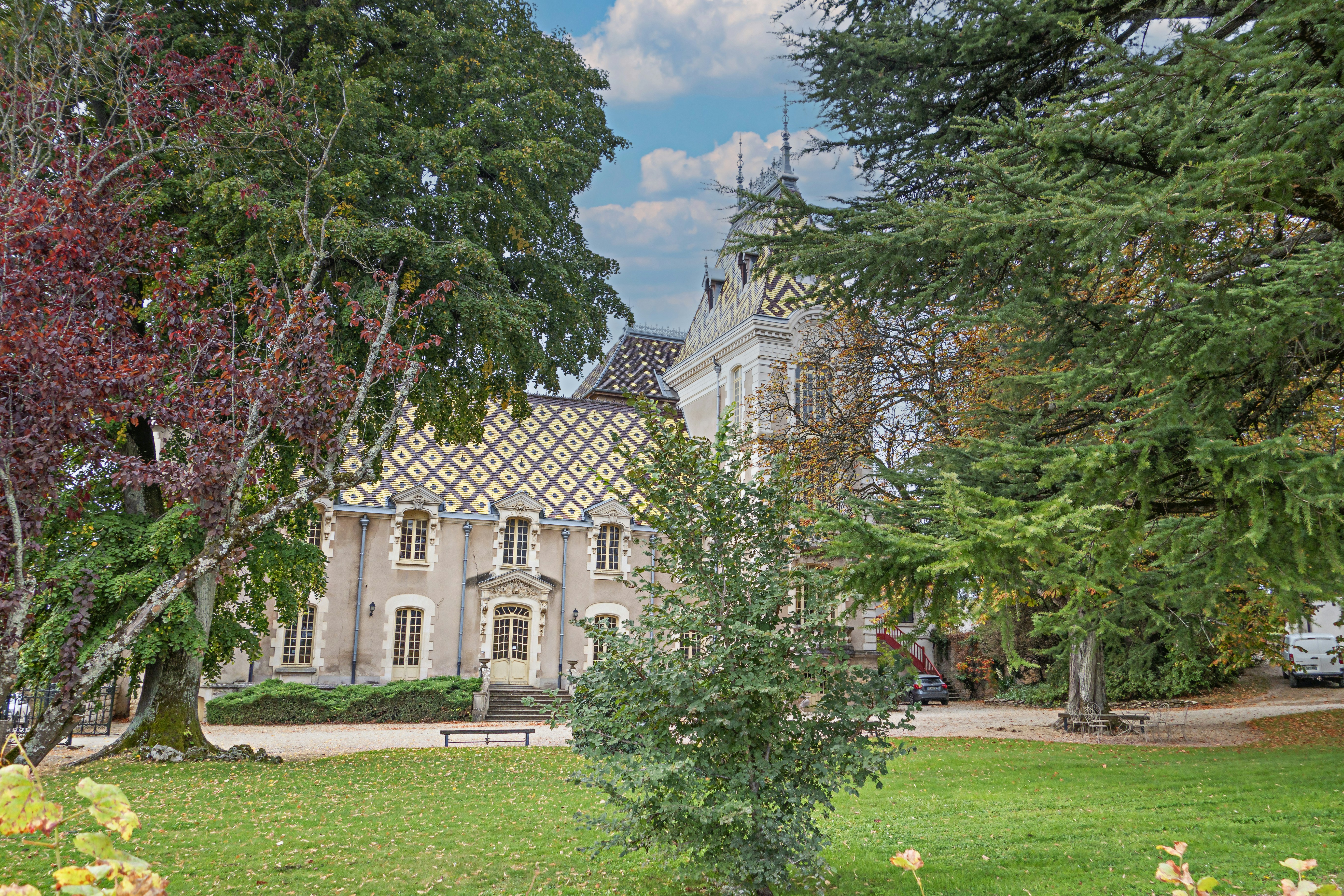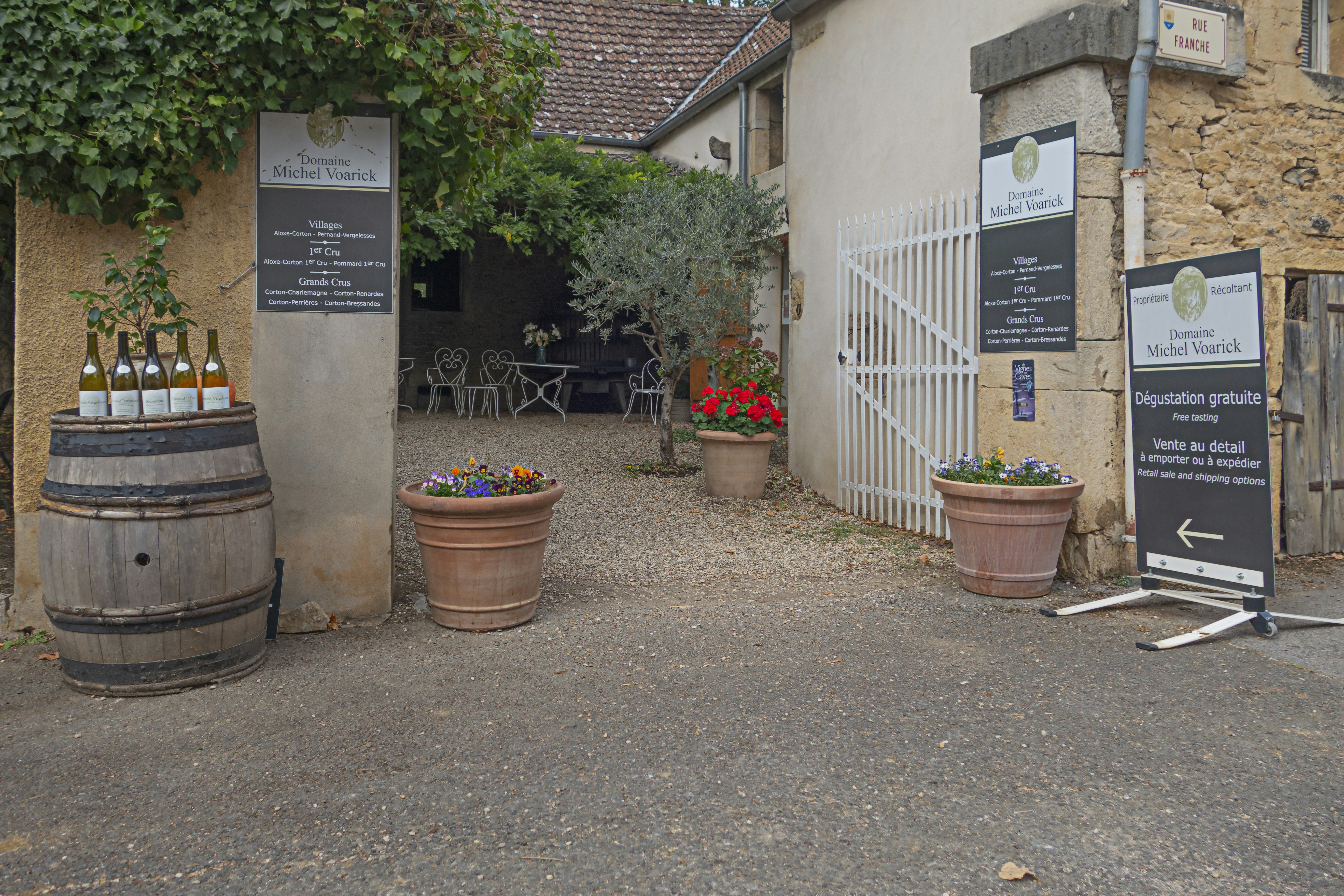Aloxe-Corton: A gem in Burgundy's crown
In the heart of Burgundy's famed Côte de Beaune, a small village holds court over some of the world's most prestigious vineyards. Aloxe-Corton, with its ancient stone houses and narrow streets, might be easily overlooked if not for the extraordinary wines that bear its name. This unassuming commune, home to barely 200 souls, guards a viticultural legacy that spans centuries and continues to captivate wine enthusiasts from across the globe.

A Tapestry of Terroir
The landscape surrounding Aloxe-Corton is dominated by the imposing Hill of Corton, a geological marvel that gives birth to both red and white Grand Cru wines – a rarity in Burgundy. The hill's unique composition of limestone and marl soils, combined with varying exposures and altitudes, creates a patchwork of microclimates. This diversity is reflected in the wines produced here, each plot imparting its distinct character to the grapes.
On the lower slopes, Pinot Noir vines are cultivated, yielding the powerful yet elegant red wines of Corton. Higher up, where the soil becomes chalkier, Chardonnay reigns supreme, producing the opulent Corton-Charlemagne, a white wine of legendary status. These Grand Cru vineyards are jealously guarded, their boundaries having been meticulously defined over centuries of observation and experience.
Things to do in Aloxe-Corton
A Legacy Written in Wine
The history of winemaking in Aloxe-Corton can be traced back to the early Middle Ages when monasteries played a crucial role in developing and preserving viticultural knowledge. The name "Corton" itself is believed to be derived from "Curtis d'Othon," referring to an estate owned by Holy Roman Emperor Charlemagne in the 8th century.
Legend has it that Charlemagne was particularly fond of the red wines from these slopes but disliked how they stained his white beard. In response, white grapes were planted on the upper part of the hill, giving birth to what would become Corton-Charlemagne. While this tale may be apocryphal, it speaks to the deep historical roots of winemaking in this region.
A Village Shaped by Wine
As one wanders through Aloxe-Corton, the influence of wine on every aspect of village life becomes apparent. Ancient stone walls enclose small family-owned domaines, many of which have been passed down through generations. The rhythm of life here is dictated by the viticultural calendar – from the winter pruning to the anticipation of harvest in late summer.
The village church, dedicated to Saint Pierre, stands as a testament to the community's enduring faith and tradition. Its simple stone facade belies an interior rich with history, where countless vignerons have prayed for favorable weather and bountiful harvests over the centuries.
Guardians of Tradition
Despite its small size, Aloxe-Corton is home to several renowned wine producers who serve as custodians of the appellation's reputation. These families, some of whom have tended the same plots for hundreds of years, blend time-honored techniques with modern innovations to craft wines that express the true essence of their terroir.
Visitors to the village are often surprised by the understated nature of these esteemed wineries. Here, pretension is eschewed in favor of a quiet pride in the land and its fruits. Tastings are conducted in centuries-old cellars, where the cool, damp air is perfumed with the heady aroma of aging wine.
Beyond the Vines
While wine undoubtedly takes center stage in Aloxe-Corton, the village and its surroundings offer other charms to the discerning visitor. The nearby Château de Corton-André, with its distinctive glazed tile roof, stands as a striking example of Burgundian architecture. Its gardens provide a peaceful retreat and offer panoramic views of the surrounding vineyards.
For those seeking to explore on foot or by bicycle, a network of trails winds through the vineyards, allowing intimate access to this storied landscape. Each season brings its own beauty, from the vibrant green of spring to the golden hues of autumn when the vines are heavy with ripe fruit.
A Feast for the Senses
No visit to Aloxe-Corton would be complete without indulging in the local cuisine. The rich, hearty dishes of Burgundy – coq au vin, boeuf bourguignon, escargots – find their perfect complement in the wines produced here. Local restaurants, often family-run affairs, take pride in sourcing ingredients from nearby farms and markets, ensuring that each meal is a celebration of regional flavors.
In the village square, a small market is held weekly, where local producers offer an array of artisanal cheeses, cured meats, and seasonal produce. It's an opportunity to engage with the community and gain insight into the culinary traditions that have evolved alongside the wine culture.
A Timeless Allure
As the sun sets over the Hill of Corton, casting long shadows across the ancient vineyards, one can't help but feel a sense of continuity with the past. Aloxe-Corton, in its quiet, unassuming way, embodies the very essence of Burgundy – a place where tradition and terroir intertwine to create wines of unparalleled depth and character.

For wine lovers and history enthusiasts alike, this small village offers a window into a world where the rhythms of nature still dictate the pace of life, and where each bottle of wine tells a story centuries in the making. In Aloxe-Corton, the legacy of Burgundy's winemaking tradition is not just preserved; it is lived, breathed, and savored with each passing vintage.
While Aloxe-Corton may be a destination for wine connoisseurs, those seeking a broader exploration of France's viticultural heritage might also consider a visit to Beaune, the wine capital of Burgundy, where the region's rich oenological traditions are celebrated on a grander scale.
Related articles
Show all
Best 15 things to do in Montpellier
In the sun-drenched Languedoc region of southern France, a city of contrasts awaits discovery. Medieval alleyways give way to cutting-edge architecture, while centuries-old traditions blend seamlessly with youthful innovation. For travelers seeking a unique blend of history, culture, and Mediterranean flair, this vibrant urban center offers a wealth of experiences. From wandering through ancient squares to savoring local delicacies, the following activities showcase the best this captivating destination has to offer.
Montpellier - FRANCE

The top 15 things to do in Caen
Normandy's capital beckons with a rich tapestry of history, culture, and gastronomy. From William the Conqueror's imposing castle to the sobering memorials of World War II, this city offers a journey through time. Cobblestone streets wind past medieval abbeys, while modern museums showcase artistic treasures. Coupled with lush gardens and bustling markets, visitors can immerse themselves in a uniquely Norman experience. Let's explore the top 15 activities that shouldn't be missed in this captivating French destination.
Caen - FRANCE

The 15 best things to do in Fontainebleau
Just a stone's throw from Paris, a world of regal splendor and natural beauty awaits. Centuries of French history have been woven into the fabric of this enchanting town, where majestic forests meet opulent palaces. Visitors can find themselves transported to a realm where kings once walked and artists found inspiration. This hidden gem offers a perfect blend of cultural richness and outdoor adventure, enticing travelers to explore its many facets.
Fontainebleau - FRANCE

Nightlife on the French Riviera - Cote d'Azur
The French Riviera is renowned for its glitz and glam appeal, hedonistic summers, and over the top attitude to partying, all of which make it a popular destination with those looking for a lively social scene. Jazz cafes, trendy bars, and glamorous night clubs line the sparkling coast and visitors can choose between splashing the cash at an invite-only beach party or rubbing shoulders with A-listers at one of the best clubs in the world. Whatever your entertainment taste may be, the Cote d’Azur has a little something for everyone.
FRANCE

 Home
Home Wishlist
Wishlist